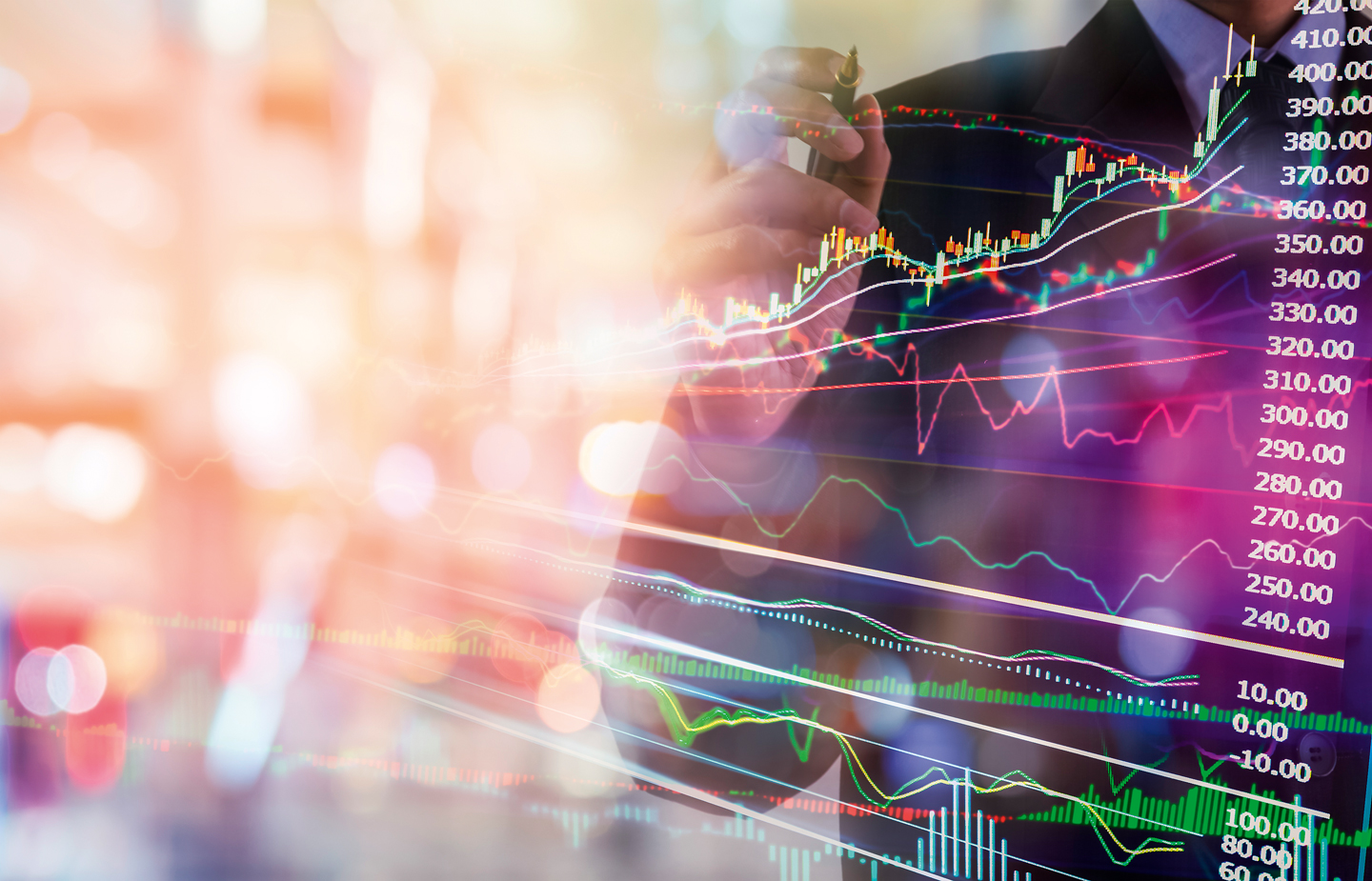In 2022, the 90th anniversary of the American-Hellenic Chamber of Commerce found us all in the midst of strange times: at the tail end of the pandemic, with an energy crisis on our doorstep and the war in Ukraine sending shockwaves around the world in everything from climate agendas to the price of cookies. We seem to once again have our work cut out for us.
As the year comes to an end and we prepare to bid it farewell, Business Partners invited this month’s Thought Leaders—representing banking, education FMCG, and tech—to share with us their expert tips on overcoming challenges as we move into the future.

Agility, Responsibility, and the Road to Net Zero
By Stefanos Dionysopoulos, Country Leader Oracle, Cluster Leader Greece, Cyprus, Malta, Bulgaria
Fast changes and disruption have been with us since the dawn of the digital era, but they exploded in intensity and breadth starting in 2020. Meanwhile, customers and employees are demanding more: seamless cross-channel experiences, convenience, higher security, and commitment to environmental values. The list keeps growing, as does the list of harsh realities that challenge progress: the pandemic, supply chain disruptions, environmental crisis, and international political and economic issues. As a result, flexibility, better planning for different scenarios and sustainable thinking have never been more critical. In 2022, we saw business leaders investing in technology and refocusing business strategies.
Flexibility, better planning for different scenarios and sustainable thinking have never been more critical
I’d like to highlight some key considerations for operating in such volatile, challenging times. First of these is the need for better planning and risk management. The ability of any company to move quickly in a coordinated fashion is now a critical core competency that can be very well supported by the right technologies. For example, taking advantage of the resiliency and agility that cloud technology provides: faster to deploy, far more secure, and always on. And very much linked to this is the use of AI. AI-enabled solutions can analyze large amounts of internal and external data to automate repeatable tasks, reduce costly human errors, improve employee engagement, improve predictions, and make personalized recommendations across lines of business such as finance, operations, HR, sales, and marketing. The good news is that AI is already embedded in modern cloud services, and companies of any size can take advantage of it.
The importance of ESG (environment, social and governance issues) has also been on the rise recently. It has already moved out of the nice-to-have category, and proper governance and sustainable operations really hit the bottom line and influence our future. Business leaders see technology as a solution to these issues and as a way to advance their ESG initiatives. According to a global Oracle study, 89% of business leaders believe companies that use technology effectively to help drive sustainable business will be the ones to succeed in the long run.
There are various pathways to net zero. One is to directly reduce fossil fuel use and transition to renewable energy. Businesses investing in technology for better governance, cleaner and optimized operations and supply chain will also help to reach net zero. Technology leaders, including CIOs and other IT executives, can take a leading role in contributing to the net zero goals of their organizations for example by moving their on-premises applications to the public cloud, using AI for more efficient use of resources, shortening supply chains and so on.

Megatrends and the Changing Landscape of Greece’s Tourism Industry
By Panayotis Kapopoulos, Chief Economist, Head of Economic Research, Alpha Bank
The economic prosperity of Greece has been tied to the development of tourism, which is one of the country’s most important sectors and has a significant multiplier effect on economic activity. For almost two decades at the dawn of the 21st century, and despite the global financial crisis of 2008, the number of travelers has significantly increased globally. This has made the tourism industry an increasingly important part of the global economy, influencing living standards as well as mindsets. Economies with traditionally high market shares in tourism activities—thanks to their natural beauty and cultural heritage—have benefited from the globalization in visitors’ traffic. Undoubtedly, Greece has been among them. However, the Covid-19 pandemic had a devastating effect on a plethora of industries around the world, most notably tourism and transport. As a result, Greece experienced a deep recessionary shock in 2020, significantly exceeding the OECD average, in large part due to its high dependence on tourism.
The pandemic accelerated tectonic changes in the economy […] especially as far as digital technology is concerned
Even before the pandemic, a changing landscape was emerging in the tourism industry worldwide. Customer preferences were rapidly changing, and businesses responded with a wide array of actions in certain areas: flexibility in booking and cancellation policies, brand building through digital displays, online searches, creativity, and services differentiation. Business models have already started to adjust to the challenging environment, yet the pandemic accelerated tectonic changes in the economy that were expected to be implemented in the coming decades, especially as far as digital technology is concerned. Additionally, the need to combine a pleasant holiday experience with advanced health and social distancing conditions will probably be a permanent feature looking forward and, thus, will transform the tourism sector.
The new paradigm is also dominated by several megatrends. Firstly, the expansion of the home-sharing economy that increased price competition in the hospitality sector, hence leading to a further increase in tourist flows; secondly, the green transition as an imperative to combat climate change and the need to address the environmental impact on many aspects of our lives, including travel and tourism; third, the digital transformation, affecting the working model and vacation options, as well as the way services are delivered; fourth, the new social distancing standards, as a legacy of the pandemic; fifth, the promotion of accessibility and inclusiveness; and, finally, the aging population and the adjustment of the tourism sector in response to these demographic changes and consequent implications, e.g. the shift in demand of the different age groups and the emergence of new consumption patterns. These megatrends also induced shifts in customer preferences, such as improving work-life balance via the combination of work and travel, increasing demand for vacations with a purpose (i.e. traveling for a specific reason such as an experience or activity), as well as, the exploration of lesser-known destinations over those affected by mass tourism. In accordance with evolving customer preferences, business models are expected to further adjust in different ways, including investing in the construction of green infrastructure, by using advanced technologies, developing alternative forms of tourism, focusing on behavioral patterns, and enhancing accessibility and inclusiveness.
This article has significantly relied on ideas expressed by the author and his colleagues E. Adamopoulou and E. Marinopoulou in the research paper “Greek Tourism Industry Reloaded: Post-pandemic Rebound and Travel Megatrends” at Insights.

How Tech Offers a Faster Path to Sustainability
By Michael Kassimiotis, Managing Director, Hewlett Packard Enterprise
Businesses around the globe are facing multiple unprecedented disruptions and an uncertain macroeconomic outlook. In the face of this complexity and volatility, leaders have to build more resilient organizations. They must be ready to turn adversity into opportunity, building sustained competitive advantage to survive long term. Sustainability is inextricably linked with longterm business success; that is why corporate sustainability is increasingly interwoven into the fabric of businesses. Leading companies understand that achieving ambitious sustainability goals requires a systemic approach to transformation—one that takes a 360-degree view of the challenge. Building sustainability as a competitive advantage, however, requires integrating technology and data from the very beginning.
leaders must be ready to turn adversity into opportunity
Most companies are undergoing digital transformation to accelerate business outcomes. Organizations across industries are growing stronger, more resilient, and more able to accelerate a data-first strategy. For companies willing to think broadly about how to advance their sustainability initiatives, technology can act as a major accelerant by using advanced ways of working to enable profitable solutions that also have a positive impact on net zero and other environmental, social, and governance goals. A big benefit of the technology eco-advantage mindset is that companies can set a roadmap for new tech adoption that will speed the journey to sustainability by helping to embed it as a core value. As more companies think about their technology and sustainability agendas in concert, management teams should ask whether they are bringing game-changing technology and digital thinking to the task of meeting sustainability goals—or whether this critical business issue is missing an important dimension.
At HPE we continue to drive innovation to exploit new ways to advance sustainability. We are committed to becoming net-zero across our entire value chain by 2040, accelerating the target date by 10 years from 2050, and pledge to reduce emissions within our operations by 70% from 2020 levels, building on the 62% reduction already achieved. And we’re also driving sustainable transformation efforts for our customers. The HPE GreenLake edge-to-cloud platform allows customers to flexibly scale their IT, avoid overprovisioning and reduce energy costs and total cost of ownership by more than 30%, while HPE Circular Economy Reports detail end-of-use processing of customers’ IT assets and associated environmental savings, which can be used for carbon disclosure reporting.
As the leaders in high-performance computing, we’re not only innovating more efficient IT to process extraordinary amounts of data but also forging partnerships to tackle climate-related challenges from predicting extreme weather events to discovering new sources of renewable energy. Frontier, the HPE Cray EX system at Oak Ridge National Laboratory, is the world’s fastest supercomputer—the first verified exascale system, able to process a quintillion (10 to the power of 18) operations per second. We would need every single person on the planet calculating 24 hours a day for more than four years to do what an exascale supercomputer can do in one second. Frontier will help speed up discoveries and breakthroughs in critical areas such as cancer and disease diagnosis and prognosis, drug discovery, renewable energy, and new materials for safer and sustainable products.
At HPE we believe our biggest opportunity to have a positive impact on the planet is by enabling you to transform and modernize—sustainably. Sustainability is no longer about doing less harm. It’s about doing more good. It is a force for good and business value.

On Constructive Disruption
By Despina Passaris, Communications Senior Director CE and SEE, P&G
The environment we’re operating in today is disrupted. The pandemic is still raging, the war in our region is ongoing, inflation rates are rising globally, and climate change is impacting every corner of the planet. These are not just distant threats; they are affecting each one of us. A recent study on the major threats people experience revealed that economic disruption, climate change, the spread of diseases, and false information online are viewed as the biggest threats by Greeks.
Innovating in times of disruption is not just possible, it is imperative
We are living in a VUCA world, and yet in these turbulent times, we at P&G are convinced that it is still possible to open up new avenues for innovation that can drive market growth and economic progress and create value for all—not just economic value but, importantly, value for the environment and our society as well. We can no longer afford to just consider the economic aspect of value creation; the social and environmental cost is also part of the equation: the triple bottom line. In fact, innovating in times of disruption is not just possible, it is imperative. Having to cope with such an unprecedented level of disruption, the only way for organizations to win is to innovate and transform, to capture the white-space growth opportunities that emerge and become more resilient to uncertain, complex and ambiguous shocks.
P&G has been around for 185 years, and throughout this time, we have seen that companies that invest in innovation through tough times outperform peers during recovery. Our own history confirms that, with such a fast-evolving business landscape, innovating and transforming remain imperative for organizations to thrive. What we may see as volatility and a high level of change around us has some known underlying factors that may often surprise us, but the truth is that not all of them are unpredictable. Many of them are global trends emerging over time, such as demographic change, technological progress, urbanization, or climate change. If we know what some of them are, we can be better prepared and even better able to see them as opportunities for transformation that can lead to growth.
And yet, while simple, this can be extremely difficult to do because often the volatility of the environment can put us all, in fire-fighting mode, scrambling to address the issue of the day rather than the underlying factors driving change. The more we focus on these underlying factors, the more we can be proactive in tapping into the opportunities rather than merely being reactive to the challenges. This commitment to identifying opportunity—even amidst change—is how innovation can create value. Economies, corporations, organizations, and societies at large can only succeed when they embrace a spirit of exploration and experimentation that helps meet the needs of people now, tomorrow and well into the future.
Disruption is a fact of life, and it’s how we react to it that will make or break us. At P&G we are making the strategic choice to deal with disruption by leading constructive disruption. It’s one thing to disrupt in a way that destroys value. Our job is to disrupt in a constructive way that drives market growth and creates value. And our job as leaders is to ensure our teams are made up of individuals who can work together across functional boundaries to tackle emerging business challenges and future-proof the business through superior, sustainable innovation.

Leveraging AI to Attain Environmental Sustainability
By Spyros Poulidas, CEO, IBM Greece and Cyprus
Undoubtedly, the climate crisis is creating pressures on the global economy, as it creates disruptions to supply chains, damage to assets and increased strains from consumers and regulators to meet sustainability targets. There is so much available information that can be used to make sustainability efforts more successful, but nowadays we are only seeing the tip of the iceberg. There is a goldmine of valuable data, observations about our planet as well as business operations, that we are not yet leveraging in order to make better decisions.
Sustainable operations across the whole value chain of national economies is undoubtedly where the future is headed
With artificial intelligence, we have a unique opportunity to address these complex issues. It is a critical enabler that has the potential to speed up the process of sustainability. With AI’s unique ability to collect, complete and interpret large and complex data sets relating to emissions, climate impact and more, all stakeholders can use the technology to combat carbon emissions and build a greener society in a more informed and data driven manner. In fact, IBM’s Global AI Adoption Index 2022, revealed that two-thirds of the 7,500 IT chiefs surveyed either used or planned to use AI to achieve sustainability goals.
Taking a 360-degree sustainability approach means more than reducing emissions. Businesses must focus on building a sustainability strategy including areas like ESG data, climate and weather insights, intelligent infrastructures, green IT, and supply chains. The following are some ways in which AI in climate data can help us take more sustainable actions and fight climate change:
Managing the impact of climate on business operations: Integrating AI with environmental, climate, and weather data can help adapt to and mitigate climate change by analyzing climate risk accurately at scale and accounting for carbon emission precisely. By measuring emissions at both the macro and micro level, reducing emissions and greenhouse gas (GHG) effects and removing existing emissions from the atmosphere, AI can assist in mitigating the climate crisis.
Creating more efficient IT and data centers: Using AI, organizations can proactively manage their IT infrastructure, such as servers, storage and networking, by proactively monitoring its health. With minimal manual intervention, AI can also be used to provide data centers with deep monitoring capabilities coupled with the ability to instantly adjust to needs.
Extending the life of physical assets: AI software can help organizations extend the life and improve the efficiency of physical assets such as buildings, machinery and critical infrastructure.
Creating more efficient and resilient supply chains: AI’s ability to analyze large amounts of data, provide visibility into operations, and support better decisionmaking makes it a potential gamechanger for creating more efficient and resilient supply chains. Moreover, AI enables a circular economy by creating transparent, equitable and net-zero supply chains through intelligent workflows.
Sustainable operations across the whole value chain of national economies is undoubtedly where the future is headed, and advanced technologies like AI can play a key role in advancing this social imperative.

The Future Is Human
By Panos Vlachopoulos, Ph.D., SFHEA, Executive Dean, Deree – The American College of Greece
Over the last decade, it has become increasingly evident that traditional organizations and business leaders are finding it difficult to navigate and make sense of the accelerating and concurrent technological changes, social value shifts, economic realities, global health issues (including the pandemic), and environmental sustainability challenges that are emerging as part of the transition from the Industrial to the Knowledge Age. Whilst these meta-trends are fundamentally reshaping the way we live, work, play, learn, travel, and consume they tend to be dominated by a focus on algorithmic rationality that can at times overlook the core human and organizational components of any transformation.
Higher education providers play a crucial role in nurturing the development of these soft skills and sensemaking capabilities leaders need
As Christian Madsbjer put it in his book Sensemaking: The Power of the Humanities in the Age of the Algorithm: “Our fixation with STEM erodes our sensitivity to the nonlinear shifts that occur in all human behavior and dulls our natural ability to extract meaning from qualitative information. We stop seeing numbers and models as a representation of the world, and we start seeing them as the truth—the only truth.” But is it not through stories, narratives and mental models of our world that we can begin to unbundle and simplify the complexity of reality and mitigate uncertainty? As we move from a largely predictable and deterministic environment to an uncertain, complex and probabilistic environment, higher education providers play an ever more crucial role in nurturing the development of these soft skills and sensemaking capabilities leaders need to make the transition. At the core of this transition is the realization that the future is human and with it the push toward human-centric training and development of our leaders.
The American College of Greece plays a significant role in such a paradigm shift in leadership development. We design and deliver programs of study and professional education that harness the capabilities and research of the humanities and social sciences combined with the STEM capabilities of our ACG150 Centers of Excellence and enhanced by our globally renowned ALBA Executive Education. But we won’t stop there. We now look to partner with businesses in the USA and in Greece to co-create and develop a series of industry-relevant professional development events in sense-making. By adopting a double diamond design thinking methodology to the co-creation process, the American College of Greece acts as a facilitator between US and Greek businesses and organizational leaders to obtain feedback on how decisionmaking is changing and what new skills and approaches are n eeded. With input from our interdisciplinary centers of excellence under our ACG150 strategic direction, our ALBA expert academics and the school’s rich network of organizations and alumni, we map together global and domestic trends—technological, social, economic, and environmental—contextualizing those trends for both countries and providing the much needed training to reshape leadership, management and skills for organizations. Join our effort, partner with us, and be part of the paradigm shift in leadership development.






